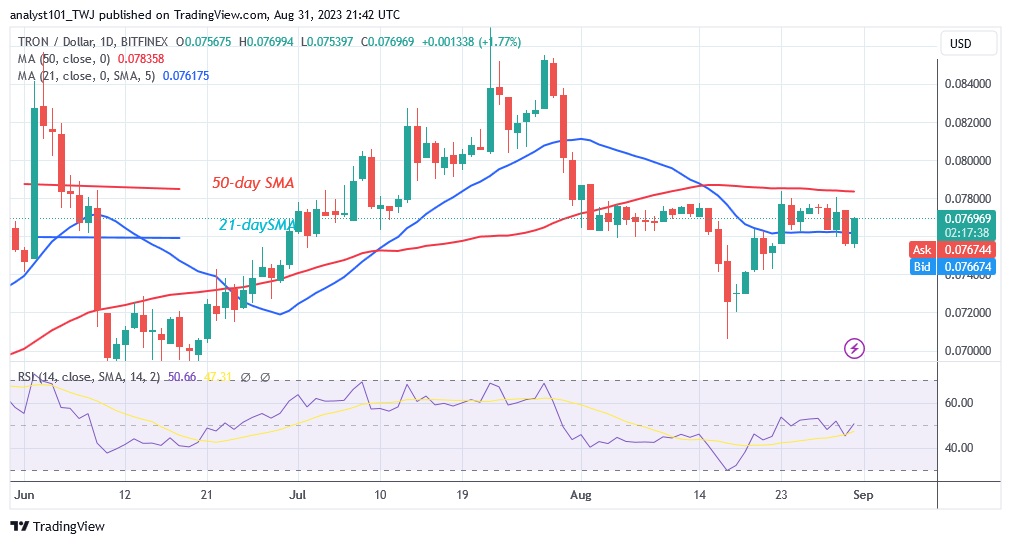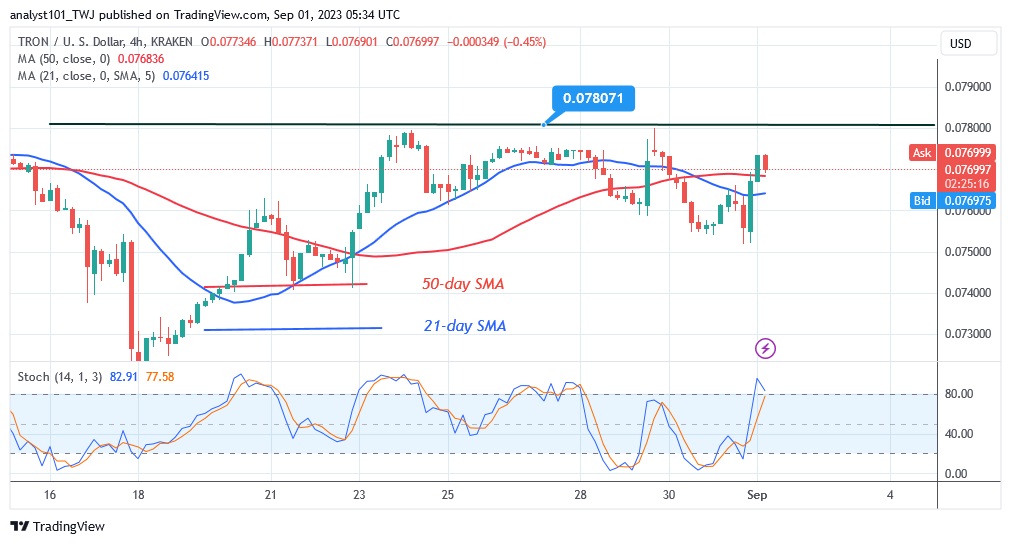Cryptocurrency analysts of Coinidol.com report, the price of TRON (TRX) has been on the rise since August 23.
TRON price long-term forecast: bullish
The cryptocurrency asset is unable to resume the uptrend as it is trapped between the moving average lines. The resistance at $0.078 and the 50-day line SMA have slowed down the upward movement.
TRON’s next high will be $0.085 per token if current resistance is broken. At the time of writing, the market had reached a high of $0.077. TRON will fall if it fails to break through the current resistance. The altcoin will fall back to its previous low of $0.07. However, as long as TRX/USD is between the moving average lines, it will remain in a trading range.
TRON indicator display
TRON is in the bullish trend zone at level 52 of the Relative Strength Index for the period 14. The crypto asset is capable of another uptrend. In the meantime, it is trapped between the moving average lines, which will lead to another range bound move. The bullish momentum of the cryptocurrency asset is above the 75 level of the Stochastic on the daily chart.
Key supply zones: $0.07, $0.08, $0.09
Key demand zones: $0.06, $0.05, $0.04
What is the next direction for TRON?
The cryptocurrency asset is in an upward movement, but the price movement was stopped at the high of $0.078. The current resistance level is an overbought area of the market. The altcoin is struggling to break into the recent high. TRON will fall every time it reaches the overbought area. However, a breakout will break through the recent high.
As we reported on August 25, the cryptocurrency’s price broke above the 21-day line SMA, but remained trapped between the moving average lines. The cryptocurrency has become trapped between the moving average lines as it reaches the overbought zone.
Disclaimer. This analysis and forecast are the personal opinions of the author and are not a recommendation to buy or sell cryptocurrency and should not be viewed as an endorsement by CoinIdol.com. Readers should do the research before investing in funds.
Source: Read Full Article


